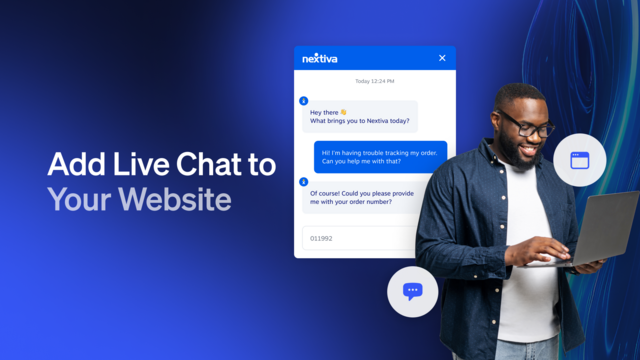Understanding why customers make certain choices can be tricky. While we can take educated guesses about what makes some interactions more successful than others, what drives customers to buy (or not), and what causes them to leave, relying on guesswork isn’t enough.
That’s where customer journey management (CJM) comes in. By tracking and optimizing how customers interact with your business, you can:
- Gather real data about customer behavior
- Better understand their entire experience with your company
- Improve key interaction points
- Create a better customer experience
This systematic approach attracts new customers and satisfies existing ones. In this guide, we’ll explore practical ways you can use customer journey management to improve your business outcomes.
What Is Customer Journey Management?
Customer journey management is the process of improving every interaction customers have with your business, whether in person or digital, across their entire relationship with your brand. The process involves three key steps: understanding the customer, using journey mapping, and optimizing user experience (UX).

Understanding the customer
Understanding your customers is the first step in customer journey management. This means learning what they need, what problems they face, and what they prefer.
To understand their customers, businesses use several methods:
- Creating detailed customer profiles
- Running customer surveys
- Using journey analytics tools to track behavior
- Segmenting audiences into specific groups based on behavior, company or personal characteristics, and their value as customers
This information helps create better, more personal experiences for different customer groups.
For example, a software company studying how long it takes different customers to make purchasing decisions might discover that tech companies make quicker decisions than healthcare companies. With this knowledge, they can adjust their communication timing to send tech companies quicker follow-ups while giving healthcare companies more time to make decisions.

Mapping the customer journey
A customer journey map shows how customers interact with your business from start to finish. It’s a road map that captures every interaction customers have with your business, whether online or in person.
Journey maps reveal important details: where customers are frustrated, what motivates them to buy, and when the best moments are to connect with them. Large businesses often create different maps for different types of audiences because customers behave differently depending on their needs and purchasing habits.

A small business looking at a $30 monthly subscription will not make decisions in the same way as a large company considering a $2,000 custom package. Their paths to becoming customers are quite different.
Understanding these diverse customer journeys and needs helps your team create better customer experiences and resolve any pain points along the way.
Optimizing the experience
The final part of customer journey management is optimizing the customer experience, improving key customer touchpoints, and removing anything that slows down or frustrates customers.
This process uses two main sources of information: what customers tell you directly (their feedback) and what the data shows about how they interact with your business.
Let’s say customers tell you they’re frustrated about having to schedule a separate call just to see pricing or get a demo. You might fix this by including demos in the first sales call, making it easier and faster for them.

You can also use this information to keep your customer service consistent across all channels. Whether a customer contacts you by email, chat, or phone, they should get the same quality of service and response time. This builds trust with customers and keeps them happy.
The goal is simple: make every customer interaction with your business smoother and more effective.
Benefits of Customer Journey Management
Customer journey management is crucial to building stronger customer relationships. Here’s how it helps your business grow:
Better customer satisfaction
When you understand and address customer needs, you build trust and make customers feel valued throughout their experience with your brand. Removing frustrations and sending the right messages at the right times (like helpful follow-ups after a purchase) through the end-to-end customer experience reinforces a customer-centric culture, improves customer engagement, and creates happier customers.
Specific examples include:
- Adjusting your sales process after realizing that customers want to see a product demo on their first sales call instead of having to book multiple calls
- Using auto-responders to send customers relevant content based on their behaviors and demographics
- Following up at the right time in the sales process so that prospects don’t feel too rushed but don’t become too disengaged either

Stronger customer loyalty
Customers remain loyal if they consistently have positive experiences with your business. Good journey management ensures that customers get what they expect every time they interact with your brand, meaning they’re more likely to stay with you.
A critical part of customer journey management, after all, is to find ways to improve overall customer experience (CX) throughout the customer lifecycle. This includes eliminating frustrations and promoting strong, consistent, and positive interactions.
If you realize that customers are likely to need onboarding support, for example, setting up a comprehensive and personalized onboarding program can start the relationship off right.
Data-driven insights
Journey management gives you real-time data about how customers interact with your business so you can identify problems and fix them quickly.
For example, analyses could show that many customers leave the shop during the checkout process. The problem could be:
- Unexpected shipping costs that surprise customers at checkout
- A payment process that is too long or complicated
- Technical problems that prevent the purchase from being completed

Identifying these problems will enable you to make smart improvements. like showing shipping costs earlier or simplifying the checkout process.
It’s important to review customer behavioral data and customer feedback across the entire life cycle to understand what optimizations and improvements can be made. This can help you determine what factors are influencing a customer’s experience and prioritize potential improvement strategies.
Better business outcomes
Businesses that properly implement customer journey management often see measurable impacts on sales, including cross-selling and up-selling opportunities. They also see a positive change in key performance indicators and metrics such as customer retention and lifetime value (LTV).
Better business outcomes improve your company’s bottom line and make investing in customer journey management worthwhile.
If your customers regularly need onboarding support, for example, this means they’re struggling to set up or implement the software without your assistance. If you don’t invest in strong onboarding processes, these customers are incredibly likely to churn, keeping your customer acquisition costs high but your LTV low. Investing in onboarding support and customer success will likely dramatically increase LTV, improving your ROI alongside it.
The 4 Stages of the Customer Journey Management Framework
Four key phases of the digital customer journey create a customer life cycle management framework:

1. Awareness (creating first impressions)
This is where customers first discover your brand. Making a strong first impression is crucial. Businesses typically use search engine optimization, social media campaigns, informative blog posts, targeted ads, and referral programs to catch potential customers’ attention.
During this part of the customer journey, businesses should:
- Focus on key value propositions that will stand out to their target audience
- Build brand awareness through repetitive touchpoints across different channels
- Offer value without asking for anything in return, including providing free resources
2. Consideration (building trust)
At this stage, prospects evaluate your product and compare it with your competitors. The key is to build trust and show your value clearly. This involves creating detailed product pages, sharing customer success stories, and providing quick, helpful customer support. Your goal is to show why you’re the best choice.
During this part of the customer journey, businesses should:
- Keep in touch with customers by leveraging personalized retargeting campaigns based on user activity
- Provide detailed educational content that helps customers make their decision
- Utilize chat pop-ups to quickly connect potential buyers to support or sales members who can answer their questions

3. Decision (making it easy to buy)
When customers are ready to buy, you need to simplify the purchase process for them. They’ve researched your competitors and are sure that you’re the vendor they want to work with. All you need is a smooth, seamless process to seal the deal — because a poor purchasing experience may drive them away later or prevent them from purchasing at all.
During this part of the process, businesses should have:
- Helpful sales representatives available through instant chat and scheduled meeting options to facilitate purchases
- An easy checkout process with streamlined checkout forms
- Quick payment options like PayPal
- Support available across different channels to answer last-minute questions

4. Loyalty (keeping customers happy)
The relationship doesn’t end with the purchase. Businesses can nurture relationships with customers to increase future transactions and average order value, both of which can increase the customer’s LTV. Eventually, these customers may even refer new customers your way, adding more business to your pipeline.
At this stage of the sales funnel, businesses should:
- Stay in touch through regular emails
- Offer special deals to existing customers
- Ask for feedback to understand what customers need
- Create loyalty programs that reward continued business
Each stage connects to the next, creating a smooth journey from first contact to loyal customer. The key is making each interaction positive and valuable for the customer.

How to Create an Effective Customer Journey Management Strategy
Customer journey management is most effective when you have a strategy in place. This strategy should consider current challenges, customer preferences, and feedback from cross-functional teams.
1. Review your current approach
Start by looking at how customers currently interact with your business. Check for any gaps or inconsistencies that might frustrate customers.
Use tools that can show you the complete picture of how customers engage with your business across different channels — from social media to customer service. CX management solutions, for example, can help you assess the following:
- Which customer segments interact with different platforms
- How customers use different platforms for support, sales, and customer success purposes
- How you can review feedback about customer experiences on each platform to identify potential challenges like customers waiting on hold too long through phone calls or receiving poor quality support on social media
2. Set clear goals
Decide what you want to achieve with your customer experience optimization. Common goals include:
- Keeping more customers (reducing those who leave)
- Getting better customer satisfaction scores
- Increasing sales
- Making the buying process faster

Choose the goals that matter most to your business and build your strategy around them. Once you’ve identified your goals, you can leverage customer data to determine which specific tactics will be most effective in helping you reach them.
3. Use customer data wisely
Gather customer insights from multiple sources to understand your customers better. Send surveys after purchases and support interactions, analyze customer feedback using AI tools, and ask your sales and support teams about common customer issues. This information helps create a strategy that puts customers first.
If, for example, you want to retain more customers, you’ll want to identify any challenges or frustrations that are causing them to churn. Customer feedback and customer success data may find that the most common issues impacting retention seem to be technical inconsistencies, delayed support, and low product adoption.
As a result, your team may focus on the following strategies to improve retention:
- Reducing technical issues that cause customer frustration and distrust
- Offering improved support, including 12-hour instead of 24-hour response times
- Providing better onboarding processes to decrease time to value and increase retention
4. Work together across teams
Customer journey management involves different stakeholders and teams — sales, support, marketing, and product. Make sure all departments communicate and work together toward the same business goals. This prevents confusion, removes data silos, and ensures customers have a smooth experience no matter who they’re dealing with.

In our example discussing how to increase retention, you need support from multiple departments:
- The IT and potential product team need to deploy artificial intelligence, machine learning, and other key automation to improve the digital experience and CX
- The support team managers need to find new ways to speed up support response times, whether that’s incorporating new AI technology, increasing staffing, or finding more efficient processes
- The customer success and/or sales teams need to work together to improve onboarding
5. Keep improving
Your first attempts at improving customer experience might not be perfect. And that’s okay. Keep track of how well your changes are working and adjust your processes based on customer feedback, performance data, and changing customer needs.
Your efforts to decrease customer support response times, for example, may result in lower-quality service, which negatively impacts your goals. You’ll want to adjust your approach quickly, looking for new ways to lower your customer effort score and increase customer satisfaction scores.
Similarly, you may find that implementing a new onboarding process does help, but usage of key features is still down. You may need to provide more training around that feature or product to increase continued adoption.
Remember, creating a great customer experience is an ongoing process. Stay flexible and keep making improvements based on what you learn.

Common Challenges in Customer Journey Management (and How to Fix Them)
Even the best-planned CJM strategies can fail because of common challenges. Let’s discuss the biggest obstacles that can impact your CJM efforts and explore how you can avoid them.
Challenge 1: Fragmented data
When customer data is spread across different systems and teams, it’s hard to understand how customers interact with your business.
The solution
Use a unified customer experience management solution like Nextiva to collect customer data in one place and track your omnichannel customer journey. This gives everyone a clear view of how customers engage with your business across channels — from first contact to ongoing support.

Challenge 2: Teams working on different goals
Sometimes different departments create problems for each other without realizing it.
For example, marketing might promote features that sales teams find hard to explain. Sales might make promises that support teams struggle to deliver, or support teams might handle issues in ways that conflict with marketing messages.
The solution
Get all teams working together toward shared goals. Use tools that let them communicate and share information easily. Make sure everyone understands how their work affects other departments and the customer experience.

Challenge 3: Changing customer expectations
Customer expectations change quickly as technology evolves. Today’s customers expect better support across multiple channels, faster response times, and more personalized experiences.
The solution
Stay flexible and ready to adapt. Keep track of industry trends, customer feedback, new technology, and changes in customer behavior. Use real-time data to spot changes quickly and adjust your approach when needed. Be ready to change before customers start looking elsewhere.
Use Nextiva to Manage Customer Journeys Effectively
Nextiva’s customer journey software consolidates communications into one intuitive platform, creating a seamless experience for customers and support agents.
It’s fully customizable and adapts to your business needs, whether you’re a small business or a large enterprise. You can easily scale and tweak your CJM strategies on the fly.
Nextiva’s predictive analytics, AI-powered sentiment analysis, and collaboration capabilities improve decision-making for better customer journey orchestration.

Unify your customer experience and improve the entire customer journey from start to finish. Get started with Nextiva’s customer journey software today.
Surprise and delight customers.
Have conversations with customers any way they prefer to communicate and work with teammates all in a single app.

















 Customer Experience
Customer Experience 










